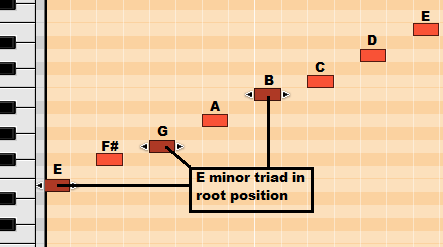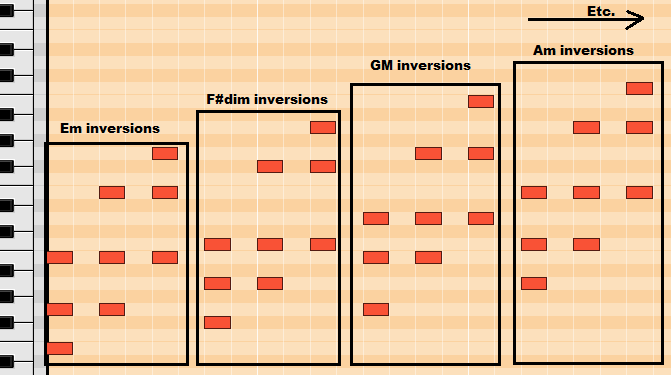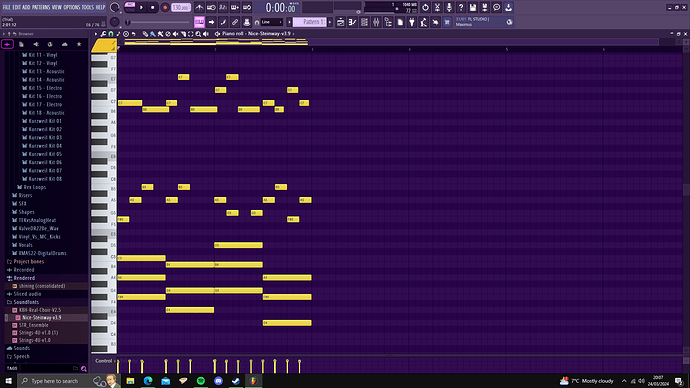Doing a compositional exercise in Reason tonight, thought I’d go through some things and try to explain them. This is pretty basic stuff, so a lot of you are probably already familiar with how it’s done.
I’ve started a new thread so I can post more about this topic at a later time.
I started with the E natural minor scale (the natural minor scale is also known as the Aeolian mode, one of the 7 different diatonic modes). I then mapped out the diatonic triads, AKA the basic triad chords which can be created with the notes in the scale (only these notes, no other ones). The process of finding out which chords these are, is fairly simple. You start with the first note, then pick every second note of the scale going upwards. You then do the same starting from the second note, then the third, etc.

By following this simple formula, you get the following 7 triads. These are the diatonic chords (in root position) of E natural minor AKA E Aeolian. I’ve numbered them below, and also added the Roman numerals used.
-
- ( i. ) E minor (E / G / B)
-
- ( iiᵒ) F-sharp diminished (F# / A / C)
-
- ( III.) G major (G / B / D)
-
- ( vi.) A minor (A / C / E)
-
- ( v.) B minor (B / D / F#)
-
- ( VI.) C major (C / E / G)
-
- ( VII.) D major (D / F# / A)
But why the Roman numerals, you may ask?
Because then, you can write, or read, chord progressions without the need to specify a key, which is useful if you want to transpose things, but keep the harmonic progression the same. You can also write chord progressions which borrow chords from other modes, and a whole lot more stuff.
Of course, the prerequisite for this is that you understand the underlying structure of how the chords in a scale/mode are created, which I have explained above. You can of course also make your own scales, and find the chords for them, following this formula; the 7 diatonic modes are just the basics.
Personally, I don’t know all the chords in all the scales by heart, but I know enough to be able to figure them out if I spend time on it. I hope my explanation here can help you guys with this too.
Here’s a link to a website which lists more chords related to E natural minor, and a whole lot of other scales. It is great as a reference, but I recommend trying the above formula for yourself, if you want to to gain a deeper understanding of the concept.







